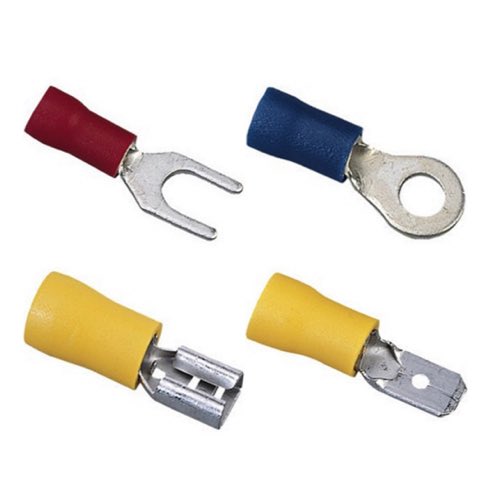Ideal Wire Terminals

Ideal wire terminals are designed to provide secure and efficient electrical connections in residential, commercial, and industrial applications. These terminals offer a reliable way to join wires, ensuring conductivity and long-lasting performance in demanding environments. Available in a variety of styles, including ring terminals, spade connectors, and butt splices, Ideal wire terminals simplify installation and maintenance while reducing the risk of loose or faulty connections. Their high-quality insulation materials enhance safety by protecting against electrical shorts and corrosion, making them a trusted choice for electricians and technicians.
Manufactured for durability, Ideal wire terminals are built to withstand harsh conditions, including exposure to moisture, chemicals, and temperature fluctuations. Their crimp-style design allows for a strong mechanical bond, ensuring that electrical connections remain secure even under vibration and mechanical stress. Many of these terminals feature color-coded insulation to help identify wire gauge sizes quickly, improving efficiency during installation.
More Information about Ideal Wire Terminals
Ideal’s commitment to innovation extends beyond basic terminal connections, with specialty terminals designed for unique electrical applications. Whether used in industrial control panels, automotive wiring, or HVAC systems, these terminals are engineered for reliable and easy installation. With a wide selection of wire connectors, Ideal provides solutions that meet industry standards for safety and performance. Their dedication to high-quality materials and precision engineering ensures that professionals can trust Ideal wire terminals to deliver consistent results in electrical projects of all sizes.
Industrial Wiring Tips and Tricks
Wire Type
MTW is typically used in industrial control panels. The flexibility of the wire allows it to be easily maneuvered through wire ducting. THHN wire is commonly found in homes or commercial buildings. The rigidity of the wire makes it easier to pull through conduit. XHHW wire is similar to THHN but provides a more protective insulation.
Wire Color
The National Electrical Code (NEC) or UL are great points of reference when trying to decide what colors of wire to use. For example, UL standard states that a ground wire should always be green, an AC hot or live wire should be black and AC neutral should be white. These are just a few examples of UL code requirements.
Wire Size
A simple rule of thumb when selecting wire size is, the higher the current, the larger the wire. It is also important to consider the bend radius of the wire. If a wire is bent too sharply, the conductors within the insulation can be damaged.
Wire Connection
It is important to make sure that the wire is connected properly and that enough torque has been applied. If enough torque is not applied to the electrical connection, the wire can become loose over time resulting in a poor electrical connection. Too much torque can damage the the wire and electrical equipment.
Wire Labels
Labeling is essential when performing any kind of electrical wiring. Proper labeling will allow others to easily identify the function of a wire, where it is going and where it has been. It can also make troubleshooting on a panel or any electrical device much easier when worked on at a later date.

